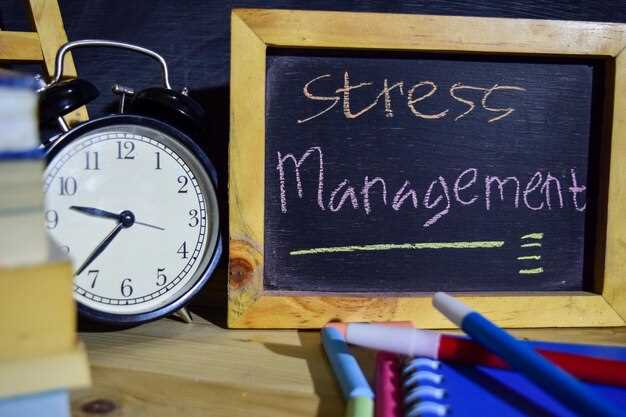
Block a 90-minute focus session as the first non-negotiable window of your workday and protect it from interruptions. Once you commit, the plan ensures you tackle the day’s most significant work. During this period, turn off notifications, close unrelated tabs, and set a precise outcome: a draft you want to complete, a problem you want to solve, or a chunk of writing you plan to finish. This is the starting rule and the set of rules you can apply today.
This rhythm leverages a practical balance: 90 minutes of deep work followed by a 15-minute reset. During the break, stretch, hydrate, or jot down a quick idea in a low-pressure writing exercise. For repetitive tasks, batch them after the block so they don’t interrupt momentum. If you’re pressed for time, especially on busy days, this cadence helps you protect quality while moving more work across your to-do list.
Turn the block into a writing-friendly ritual by starting with a concrete idea for what you’ll deliver. Draft a one-paragraph summary or a bullet list of the next steps, so you can pick up where you left off without rethinking the context. Use a timer to maintain focus and a short youtube tip or technique that directly serves the task at hand, not as a distraction.
In this article, the framework is straightforward: define the goal, guard the window, and review outcomes. Because the format is repeatable, it becomes a source of balance between writing tasks and more complex problems. The result is a path that supports significant progress even on difficult days, and it helps you align tasks with your core priorities without burnout. If you need more control, repeat the cycle.
A Practical Framework for 90-Minute Focus Sessions

Block a 90-minute focus window first thing daily and name a single outcome for that block. Open your planner and write the goal in one sentence, then start a timer. For workers who juggle multiple tasks, aim for three outcomes and let this anchor keep the day from fragmenting.
Clear the desk and the door: close the door to interruptions, mute nonessential alerts, and limit tools to what you need. If you work with a team in a school or workplace, share the plan so others know when you are heads-down.
Split the 90 minutes into three chunks and use a timer to stay within each. Place a sub-task in each chunk so you can grab momentum quickly and avoid cognitive drift. Within the block, keep energy high with a quick hydration break and a two-minute reset between chunks, then resume with focus.
Choose tasks that align with your plan and your ability. Start with the most valuable sub-task first and track progress in a simple checklist on your planner. Use firefox to minimize tab switching, block email checks during the block, and consume only what supports the goal. After the block, review the latest results and adjust your plan accordingly.
After each chunk, grab a quick note: what was done, what remains, and the immediate next step. This keeps ourselves and everyones aligned and improves our ability to move fast in subsequent blocks.
источник
For a scalable approach, use a simple, repeatable cycle across daily blocks. Store results in your planner and push a brief email summary to the platforms used by your team or school.
| Phase | Action |
|---|---|
| Preparation | Define a single goal, write it in your planner, and set a 90-minute block; target three outcomes. |
| Execution | Divide into three chunks; use a timer; work on sub-tasks; maintain flow. |
| Distraction Control | Close the door; mute alerts; use firefox to block nonessential sites; limit to essential platforms. |
| Review | Log done; reflect on learnings; plan next block; share a brief email if needed. |
Structure a 90-Minute Block: Start, Deep Work Phase, Short Break
Begin with a 10-minute start to set the block’s outcome and list 2-4 activities. Write a single concrete output, such as a draft, model, or plan, and choose one primary task for the Deep Work Phase. Prepare your workspace: silence notifications, close nonessential tabs, and place a visible timer. This kickoff goes smoothly and aligns with the latest findings, giving momentum and encouraging you to embrace focus rather than letting the day whirl around. Some professionals have been refining that cadence; theyre accustomed to interruptions, so this session introduces a variety of focus prompts that keep the block moving. Before you move on, confirm the target and the next action.
Deep Work Phase: 60 minutes of uninterrupted effort on the chosen task. Maintain a single objective, resist context switching, and keep one window for deep work. Use a timer to track progress, and jot 3 quick micro-notes: what you completed, what remains, and any new insights. Sometimes distractions appear; handle them briefly and return to the task. This approach can transform output and confidence. For many, it requires practice; theyre figuring out how to minimize distractions and stay accustomed to longer stretches without meetings. If a distraction arises, note it briefly and return to the task; the key is to re-enter the flow quickly and continue.
Short Break: 20 minutes to rest and reset. Stand, stretch, walk, hydrate, and clear minor decisions from the mind. Capture any fresh ideas in a quick log, then re-enter with a clean plan for the next block. This rest period helps maintain momentum across many sessions and avoids a whirlwind of fatigue later. The structure keeps the rhythm focused and productive, ensuring you can sustain this block across multiple sessions without derailing the day.
Priority Selection: How to Choose the Day’s Next Task
Choose a high-impact task you can finish in a 90-minute block and place it on your calendar as the day’s first focus period.
Scan around your calendar to identify tasks that align with a meaningful goal and unlock resources for ourselves.
Following this rule, select the task that yields the most meaningful progress and fits a 90-minute window; if two options tie, pick the one that provides fast improvement with the fewest context switches.
Use calendars and apps to track decisions; maintain a variety of options visible across your calendar views, and check firefox if you need to verify links or notes.
Especially when energy is high, schedule the biggest challenge first; if energy drops, choose a fast task that builds momentum without derailing the day.
Never force yourself to sit through a dragged-out task; after each 90-minute block, take a short rest, stand or walk for 5–7 minutes, and avoid long sitting, especially during busy periods.
Idea: There is no one-size-fits-all template, so build a personal prioritization system you reuse daily and tailor for each employee, each user, and each period; include fields for task, impact, resources, and timing, and keep it in your firefox-linked notes or preferred apps.
Distraction Detox: Quick Tools to Shield Focus
Silence your phone for the next 90-minute work block–that starts your distraction detox. Move it to another room or switch on Do Not Disturb, and close nonessential apps so notifications won’t pull you away mid-task. Prepare a single objective for the block, and resist multitasking by keeping only one document or window in view. When the timer ends, take a 10-minute break to reset and then advance to the next block.
Three quick rules shield focus: block social sites like youtube during the block; keep the phone in another room or on silent; use a blocker that prevents new tabs or apps from opening. They help tackle interruptions and increase consistency across days. This simple regime also protects your workday from constant checks, especially in busy mornings when distractions creep in.
Create a diverse set of tools that fit busy mornings: start your day with a glass of water, a light breakfast, and a quick 5-minute plan. Introduce a simple focus ritual, making momentum in the right direction. This habit helps bend momentum away from distractions. Write directions for the block on a sticky note: one outcome, one next action.
Created templates help you tackle the day: a timer for 90-minute blocks, a minimal distraction checklist, and a ready list of interruptions to capture so you can deal with them after the block. The data shows that it takes about 23 minutes to regain full concentration after an interruption; using a focused rhythm reduces that loss to a minimum–at least by 40% in some teams. Also, track completed items to demonstrate progress and motivate more consistency. This is one of many ways to protect focus.
Over years of practice, you build consistency and more momentum. Start with three blocks in a workweek and gradually increase to more if your schedule allows; keep at least 90 minutes for the core sessions. They show that small wins compound, and this approach really supports steady progress even on busy days.
Finish with a quick complete review: note what you completed, what to tackle next, and adjust the plan for tomorrow morning to keep the rhythm around your priorities. Use this loop to create a steady, repeatable pattern that elevates your 90-minute focus strategy across a busy workday.
Break Strategy: Maximizing Recharge During 10–15 Minute Breaks
Recommendation: For every 90-minute focus block, take a 10–15 minute break that follows a strict 5-4-3 rhythm: 5 minutes of movement, 4 minutes for hydration and a quick nourishment, and 3 minutes of mental reset. This powerful sequence restores attention without adding overhead.
Employee customization matters: each employee can tailor the break pattern to their role and energy cycles.
Lesson: small, repeatable breaks go a long way. What goes next is to apply this pattern with little variation and track the impact over a year for changes that stay encouraging and sustainable.
- Move: 5 minutes of brisk walking, dynamic stretches, or a quick stair climb. Keep a phone aside to pull your attention back to activity and avoid drains from prolonged screen time.
- Refuel: 4 minutes for hydration and a small snack; carve out a little bite or breakfast-like option if available; choose protein + complex carbs to support staying alert during the next block; include additional water if thirsty.
- Reset: 3 minutes of breathing or light mindfulness; try box breathing (4-4-4-4) for 3 cycles, or a short puzzle to shift cognitive load and refresh working memory.
Implementation tips
- Scheduling discipline: block the breaks in the calendar and set gentle reminders; known patterns across teams show consistent breaks reduce fatigue and stabilize mood across the year.
- Environment optimization: stand near a window, do a quick stretch, sip water, and avoid screen scrolling during reset to prevent drain on concentration.
- Flexibility: if a meeting runs long, tweaked rhythm by shortening movement or compress reset; keep the 10–15 minute window and adapt as needed for workload changes.
- Skill and culture: encouraging employees to share favorite break activities; provide a short list of options to support a little variety and encourage a good habit; this adds support and flexibility.
- Tracking and adjustments: log break outcomes (alertness, mood, task readiness) and pulled insights after a week; maybe try a small tweak every few weeks; this helps complete the approach.
Track and Adapt: Simple Metrics to Guide Your Rhythm

Begin with a daily quick audit: track three concrete metrics during each 90-minute focus block and tweak the next session based on the results. Carve out time, record exactly how long you worked, and allocate resources to what is covered, so you can stay staying on track across busy days and moments you might not expect.
Metrics to cover daily include: scheduled vs actual sessions, duration vs planned, and task completion percentage. Track distraction events, rest breaks, and energy level to see how they impact productivity and outcomes, helping you drive better results. they show whether you’re spending time on high-value activity or just consuming tasks.
Keep a simple log and add a quick video note after each session to capture cues you can’t write down. theres no myth: a brief video note accelerates learning and helps you stay aligned with your daily rhythm and your scheduled plan.
Adopt a few decision rules: if focus level dips or you hit a busy spell, tweaked scheduling by shortening the block to 60–75 minutes or adding a longer rest. If you’re likely to drift, adjust the next day’s scheduled rhythm; rest can boost learning and long-term productivity. giving yourself permission to rest keeps you resilient.
the first step is to set three sessions per day, each 90 minutes long, with a 10-minute rest between. Track your pass rate–aim for 80–85% of the block spent in deep work. If you consume more or less than planned, tweak the next day; whatever your role, keep the rhythm scheduled and daily, and adjust for rest and lives.
